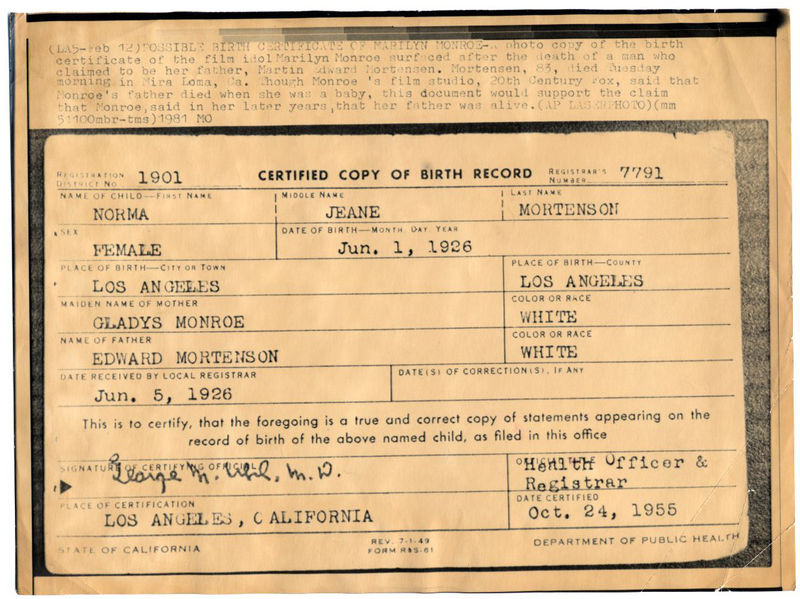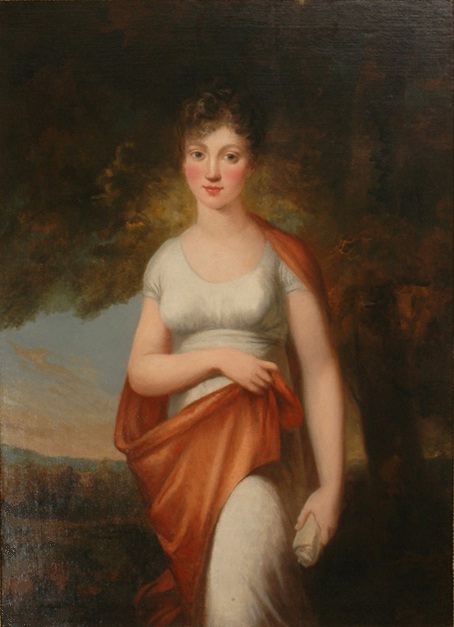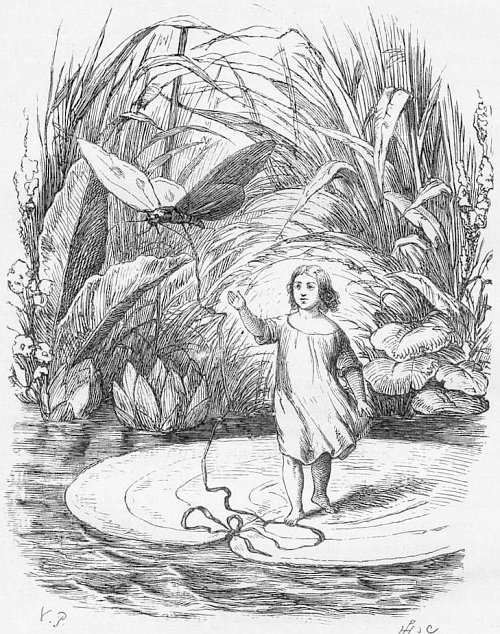|
Hans Christian Andersen
Hans Christian Andersen ( , ; 2 April 1805 – 4 August 1875) was a Danish author. Although a prolific writer of plays, travelogue (literature), travelogues, novels, and poems, he is best remembered for his literary fairy tales. Andersen's fairy tales, consisting of 156 stories across nine volumes, have been translated into more than 125 languages. They have become embedded in Western culture, Western collective consciousness, accessible to children as well as presenting lessons of virtue and resilience in the face of adversity for mature readers., p. 388 His most famous fairy tales include "The Emperor's New Clothes", "The Little Mermaid", "The Nightingale (fairy tale), The Nightingale", "The Steadfast Tin Soldier", "The Red Shoes (fairy tale), The Red Shoes", "The Princess and the Pea", "The Snow Queen", "The Ugly Duckling", "The Little Match Girl", and "Thumbelina." Andersen's stories have inspired ballets, plays, and animated and live-action films. Early life Andersen was ... [...More Info...] [...Related Items...] OR: [Wikipedia] [Google] [Baidu] |
Odense
Odense ( , , ) is the third largest city in Denmark (after Copenhagen and Aarhus) and the largest city on the island of Funen. As of 1 January 2025, the city proper had a population of 185,480 while Odense Municipality had a population of 210,803, making it the fourth largest municipality in Denmark (behind Copenhagen, Aarhus and Aalborg municipalities). Eurostat and OECD have used a definition for the Metropolitan area of Odense (referred to as a ''Functional urban area''), which includes all municipalities in the Province (Danish: Provinces of Denmark, ''landsdel'') of Funen (Danish: ''Fyn''), with a total population of 504,066 as of 1 July 2022. By road, Odense is located north of Svendborg, to the south of Aarhus and to the southwest of the capital Copenhagen. The city was the seat of Odense County until 1970, and Funen County from 1970 until 1 January 2007, when Funen County became part of the Region of Southern Denmark. Odense has close associations with Hans Christian ... [...More Info...] [...Related Items...] OR: [Wikipedia] [Google] [Baidu] |
The Steadfast Tin Soldier
"The Steadfast Tin Soldier" () is a literary fairy tale by Hans Christian Andersen about a tin soldier's love for a paper ballerina. The tale was first published in Copenhagen by C.A. Reitzel on 2 October 1838 in the first booklet of ''Fairy Tales Told for Children. New Collection.'' The booklet consists of Andersen's "The Daisy" and " The Wild Swans". The tale was Andersen's first not based upon a folk tale or a literary model. "The Steadfast Tin Soldier" has been adapted to various media including ballet and animated film. Plot On his birthday, a boy receives a set of 25 tin soldiers all cast from one old tin spoon and arrays them on a table top. One soldier stands on a single leg because, as he was the last one cast, there was not enough metal to make him whole. Nearby, the soldier spies a pretty paper ballerina with a spangle on her sash. She, too, is standing on one leg, and the soldier falls in love. That night, a goblin among the toys in the form of a jack-in-the-b ... [...More Info...] [...Related Items...] OR: [Wikipedia] [Google] [Baidu] |
Jonas Collin
Jonas Collin (6 January 1776 – 28 August 1861) was a Danish civil servant and patron of the arts. He took care of Hans Christian Andersen when the later writer first arrived in Copenhagen as a child and remained his loyal friend and supporter for the remainder of his life. He was also involved in the foundation of the Thorvaldsen Museum. Early life and education Collin was born in Copenhagen, the son of director of the Royal Danish Class Lottery Niels Collin (1736–1797) and Ingeborg Bolten (1735–1817). He grew up in the Collin House in Bredgade. He was taught at home, first by his parents and then by private teachers, including Christopher Frimann Omsen and the priest Michael Gottlieb Birckner. He studied law at the University of Copenhagen, graduating in 1795. Career Collin's first job was in his father's office. This left him with enough time to study foreign languages and follow lectures on philosophy, mathematics and physics at the university. In 1800, he passed th ... [...More Info...] [...Related Items...] OR: [Wikipedia] [Google] [Baidu] |
Royal Danish Theatre
The Royal Danish Theatre (RDT, Danish: ') is both the national Danish performing arts institution and a name used to refer to its old purpose-built venue from 1874 located on Kongens Nytorv in Copenhagen. The theatre was founded in 1748, first serving as the theatre of the king, and then as the theatre of the country. The theatre presents opera, the Royal Danish Ballet, multi-genre concerts, and drama in several locations. The Royal Danish Theatre organization is under the control of the Danish Ministry of Culture. Performing arts venues * The Old Stage is the original Royal Danish Theatre built in 1874. * The Copenhagen Opera House ''(Operaen)'', built in 2004. * Stærekassen (New Stage) is an Art Deco theatre adjacent to the main theatre. It was used for drama productions. It is no longer used by the Royal Theatre. * The Royal Danish Playhouse is a venue for "spoken theatre" with three stages, inaugurated in 2008. Cultural references * The Royal Theatre on Kongens Nytorv ... [...More Info...] [...Related Items...] OR: [Wikipedia] [Google] [Baidu] |
Boy Soprano
A boy soprano (British and especially North American English) or boy treble (only British English) is a young male singer with a voice in the soprano range, a range that is often still called the treble voice range (in North America too) no matter how old. Origins In the Anglican and English Catholic liturgical traditions (in which girls and women did not sing in church choirs), young male choristers were normally referred to as "trebles" rather than as boy sopranos, but today the term "boy trebles" is increasingly common (girls with high voices are trebles too). The term "treble" derives from the Latin ', used in 13th and 14th century motets to indicate the third and highest range, which was sung above the tenor part (which carried the tune) and the alto part. Another term for that range is '. The term "treble" itself was first used in the 15th century. Trebles have an average range of A3 to F5 (220–700 Hz). The term ''boy soprano'' originated with Henry Stephen C ... [...More Info...] [...Related Items...] OR: [Wikipedia] [Google] [Baidu] |
Apprenticeship
Apprenticeship is a system for training a potential new practitioners of a trade or profession with on-the-job training and often some accompanying study. Apprenticeships may also enable practitioners to gain a license to practice in a regulated occupation. Most of their training is done while working for an employer who helps the apprentices learn their trade or profession, in exchange for their continued labor for an agreed period after they have achieved measurable competencies. Apprenticeship lengths vary significantly across sectors, professions, roles and cultures. In some cases, people who successfully complete an apprenticeship can reach the " journeyman" or professional certification level of competence. In other cases, they can be offered a permanent job at the company that provided the placement. Although the formal boundaries and terminology of the apprentice/journeyman/master system often do not extend outside guilds and trade unions, the concept of on-the-job trai ... [...More Info...] [...Related Items...] OR: [Wikipedia] [Google] [Baidu] |
One Thousand And One Nights
''One Thousand and One Nights'' (, ), is a collection of Middle Eastern folktales compiled in the Arabic language during the Islamic Golden Age. It is often known in English as ''The Arabian Nights'', from the first English-language edition (), which rendered the title as ''The Arabian Nights' Entertainments''. The work was collected over many centuries by various authors, translators, and scholars across West Asia, Central Asia, South Asia, and North Africa. Some tales trace their roots back to ancient and medieval Arabic, Persian, and Mesopotamian literature. Most tales, however, were originally folk stories from the Abbasid and Mamluk eras, while others, especially the frame story, are probably drawn from the Pahlavi Persian work (, ), which in turn may be translations of older Indian texts. Common to all the editions of the ''Nights'' is the framing device of the story of the ruler Shahryar being narrated the tales by his wife Scheherazade, with one tale told ov ... [...More Info...] [...Related Items...] OR: [Wikipedia] [Google] [Baidu] |
Birth Certificate
A birth certificate is a vital record that documents the Childbirth, birth of a person. The term "birth certificate" can refer to either the original document certifying the circumstances of the birth or to a certified copy of or representation of the ensuing registration of that birth. Depending on the jurisdiction, a record of birth might or might not contain verification of the event by a healthcare professional such as a midwife or doctor. The United Nations Sustainable Development Goal 17, an integral part of the Sustainable Development Goals, 2030 Agenda, has a target to increase the timely availability of data regarding age, gender, race, ethnicity, and other relevant characteristics which documents like a birth certificate have the capacity to provide. History and contemporary times The documentation of births is a practice widely held throughout human civilization. The original purpose of vital statistics was for tax purposes and for the determination of available mil ... [...More Info...] [...Related Items...] OR: [Wikipedia] [Google] [Baidu] |
Saint Hans Church
Saint Hans Church (Danish: ''Sankt Hans Kirke'') is a church in Odense, Denmark. History First mentioned in 1295, it was built by the Knights Hospitaller, also known as the Order of Saint John. Not much of the original building remains as it was rebuilt in 1636 and subsequently restored on two occasions. Built of red brick with horizontal decorations on the chancel wall, it has large Gothic windows. The date of 1496 on one of the bells in the step-ribbed tower may well be the year the church was completed. The tower is adjacent to Odense Palace which was originally built as a monastery. The church has a three manual Marcussen & Søn, Marcussen organ (music), organ used by Kevin Bowyer to record the complete organ works of Bach for Nimbus Records. References Churches in Odense Churches in the diocese of Funen Lutheran churches converted from Roman Catholicism {{Denmark-Lutheran-church-stub ... [...More Info...] [...Related Items...] OR: [Wikipedia] [Google] [Baidu] |
Baptism
Baptism (from ) is a Christians, Christian sacrament of initiation almost invariably with the use of water. It may be performed by aspersion, sprinkling or affusion, pouring water on the head, or by immersion baptism, immersing in water either partially or completely, traditionally three times, once for each person of the Trinity. The synoptic gospels recount that John the Baptist baptism of Jesus, baptized Jesus., , Baptism is considered a sacrament in most churches, and as an ordinance (Christian), ordinance in others. Baptism according to the Trinitarian formula, which is done in most mainstream Christian denominations, is seen as being a basis for Christian ecumenism, the concept of unity amongst Christians. Baptism is also called christening, although some reserve the word "christening" for the Infant baptism, baptism of infants. In certain Christian denominations, such as the Catholic Churches, Eastern Orthodox Churches, Oriental Orthodox Churches, Assyrian Church of t ... [...More Info...] [...Related Items...] OR: [Wikipedia] [Google] [Baidu] |
Christian VIII Of Denmark
Christian VIII (18 September 1786 – 20 January 1848) was King of Denmark from 1839 to 1848 and, as Christian Frederick, King of Norway in 1814. Christian Frederick was the eldest son of Frederick, Hereditary Prince of Denmark, Hereditary Prince Frederick, a younger son of King Frederick V of Denmark and Norway. As his cousin Frederick VI of Denmark, Frederick VI had no sons, Christian Frederick was heir presumptive to the throne from 1808. Early years Birth and family Prince Christian Frederick of Denmark and Norway was born late in the morning on 18 September 1786 at Christiansborg Palace, the principal residence of the Danish Monarchy on the island of Slotsholmen in central Copenhagen. He was officially the eldest son of Hereditary Prince Frederick of Denmark and Norway and Duchess Sophia Frederica of Mecklenburg-Schwerin. His father was a younger son of the deceased King Frederick V of Denmark-Norway and his second wife, Duchess Juliana Maria of Brunswick-Wolfenbüttel, an ... [...More Info...] [...Related Items...] OR: [Wikipedia] [Google] [Baidu] |
Thumbelina
Thumbelina (; ) is a literary fairy tale written by Danish author Hans Christian Andersen. It was first published by C. A. Reitzel on 16 December 1835 in Copenhagen, Denmark, with "The Naughty Boy" and "The Travelling Companion" in the second installment of '' Fairy Tales Told for Children''. Thumbelina is about a tiny girl and her adventures with marriage-minded toads, moles, and cockchafers. She successfully avoids their intentions before falling in love with a flower-fairy prince just her size. Plot A woman yearning for a child asks a witch for advice and is presented with barley which she is told to go home and plant (in the first English translation of 1847 by Mary Howitt, the tale opens with a beggar woman giving a peasant's wife a barleycorn in exchange for food). After the barleycorn is planted and sprouts, a tiny girl named Thumbelina (Tommelise) emerges from its flower. One night, Thumbelina, asleep in her walnut-shell cradle, is carried off by a toad who w ... [...More Info...] [...Related Items...] OR: [Wikipedia] [Google] [Baidu] |







